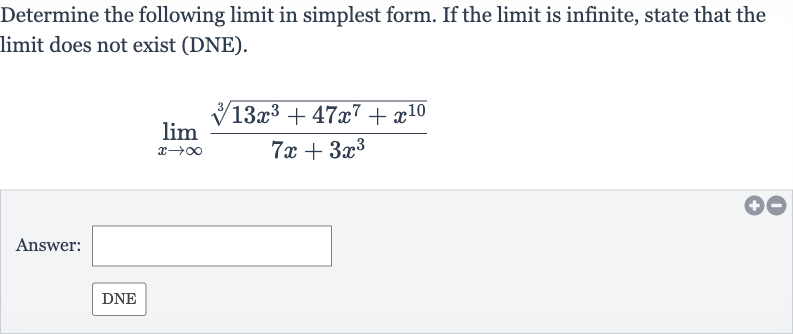Full solution
Q. Determine the following limit in simplest form. If the limit is infinite, state that the limit does not exist (DNE).Answer:
- Identify highest power: To find the limit of the given expression as approaches infinity, we should first identify the highest power of in both the numerator and the denominator to simplify the expression.
- Divide by : In the numerator, the highest power of is and in the denominator, the highest power of is . To simplify, we can divide both the numerator and the denominator by , the highest power in the denominator.
- Simplify expression: After dividing by , the expression becomes:This simplifies to:
- Negligible terms: As approaches infinity, the terms and become negligible compared to the terms with . Also, approaches . So the expression further simplifies to:
- Dominant term: Now, we can see that is the dominant term in the cube root, so we can ignore the term as approaches infinity. The expression now simplifies to:
- Final limit: Taking the cube root of gives us . So the expression is now:
- Final limit: Taking the cube root of gives us . So the expression is now: As approaches infinity, also approaches infinity. Therefore, the limit of the expression as approaches infinity is infinity.

